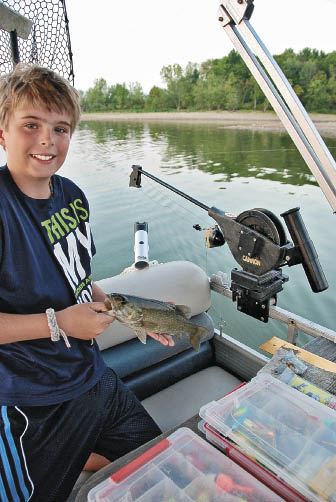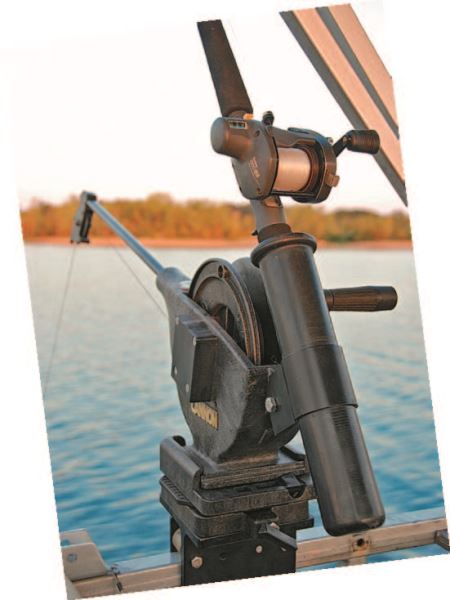 If you have a fish finder aboard your pontoon or deck boat, and you monitor it much, you have probably shared the frustration of seeing the distinct marks of fish below yet not being able to catch them. As I write this, I just eliminated the adverb "far" from that opening sentence, for the fish don't need to be far below to be seen yet not felt-or to be fooled by the tactic I recommend here.
If you have a fish finder aboard your pontoon or deck boat, and you monitor it much, you have probably shared the frustration of seeing the distinct marks of fish below yet not being able to catch them. As I write this, I just eliminated the adverb "far" from that opening sentence, for the fish don't need to be far below to be seen yet not felt-or to be fooled by the tactic I recommend here.
We are just coming off one of the hottest summers on record across much of North America. Here in my locale we weathered record-high heat and record-low water levels in several of the lakes I fish. The latter situation can be beneficial to anglers, for "low" water translates to "less," a situation that can concentrate a lake's fish population in the smaller body of water, therefore making them easier to locate.
This year, that advantage was offset by the high air temperatures, which raised water temperatures and drove many fish deep to find a cooler climate. On my local lake, I could see the fish on my sonar screen, stacked just over the thermocline or in tight bunches near schools of baitfish suspended anywhere from ten to 40 feet below my transducer. Crappies, walleyes, saugeyes-even muskies-were apparent below, each holding at a particular depth and not necessarily a deep one, but much defined.
The gamefish found a level where temperature, oxygen, light penetration and available food combined to make it the perfect depth at which to hold, and they stayed there until one or more of those conditions changed.
When confronted with such precise depths to attempt to reach in order to place baits in front of suspended fish, anglers can choose from crankbaits and jigs, to jigging spoons and bobber presentations to do the job. With the exception of slip-bobber rigs, none of the tactics assures that your bait will remain in the target zone-unless it is held there with a downrigger ball.
 When I fish the Great Lakes or large impoundments out West-and even in some saltwater situations-the boats from which I angle are often fitted with downriggers. The devices are counted upon to take a bait directly to the depth at which the gamefish are found to be holding-and keep it there. When I was confronted with a similar situation on my home waters this past summer, I decided to rig my pontoon with a downrigger to tackle the same situations using what has been described as `controlled-depth' fishing.
When I fish the Great Lakes or large impoundments out West-and even in some saltwater situations-the boats from which I angle are often fitted with downriggers. The devices are counted upon to take a bait directly to the depth at which the gamefish are found to be holding-and keep it there. When I was confronted with a similar situation on my home waters this past summer, I decided to rig my pontoon with a downrigger to tackle the same situations using what has been described as `controlled-depth' fishing.
You know what? We (literally) netted results on the first outing aboard the family pontoon equipped with a single manual downrigger. The baited lines we snapped onto the release clips and lowered to the depth our sonar showed the fish to be holding out-fished the traditional `flat' lines we trolled by more than two to one. Early and late in the day, sometimes we found fish stacked at depths as shallow as ten feet, and by lowering the ball to that exact depth we hooked up. We used shallow-diving crankbaits and spoons matched in length to the size of the baitfish and caught fish when practically no one else was hooking-up. We also caught some doubletakes from fellow boaters who had never seen a pontoon rigged with a downrigger.
The Cannon model we used can be made portable with a rail-mount base that remains on the boat when the downrigger is not being used. And to be honest, for us that may be the case most of the season. But when the fish are concentrated, especially-but not necessarily-when they are deep, we'll break out the `rigger and put our baits directly in their faces.

